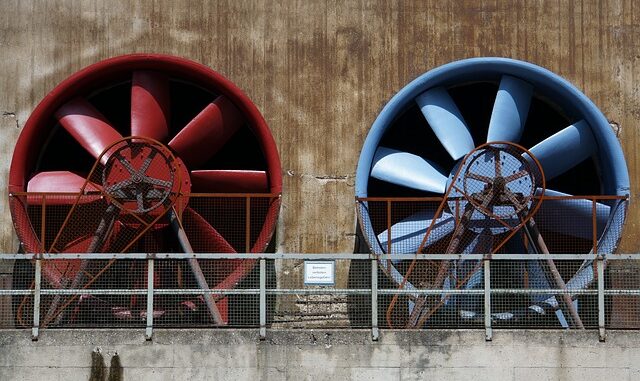
Summary
This article explores the evolving landscape of healthy buildings in the UK, examining the intersection of occupant well-being and building design. We delve into the core principles of healthy building design, highlighting the importance of ventilation, air quality, and natural light. Finally, we consider the impact of recent changes to UK Building Regulations on the future of healthy building construction.
Successful low-energy building design hinges on careful planning. Focus360 Energy can help.
Main Story
The UK’s seeing a real shift in how we think about buildings. It’s not just about throwing up some walls and a roof anymore, is it? Now, there’s a growing movement towards creating spaces that actually boost our health and well-being. We’re talking about ‘healthy buildings,’ and honestly, it’s about time. Think about it, we spend, like, 90% of our lives indoors, so the places we inhabit have a HUGE impact.
The Pillars of a Healthy Building
What exactly makes a building ‘healthy’? Well, there are a few key things to consider.
-
Air Quality is Key: Fresh air. It sounds simple, right? But it’s vital. Good ventilation gets rid of pollutants, keeps the air fresh, and that’s crucial for our lungs and our brains! Proper monitoring of air quality is pretty key too.
-
Let the Light In: Remember that feeling when you’re stuck inside on a sunny day? Natural light does wonders for your mood and focus. I always try to sit near a window when I’m at my co-working space. Strategically placed windows can make all the difference.
-
Peace and Quiet (Please!): Noise can drive you crazy, can’t it? It leads to stress and makes it impossible to concentrate, healthy buildings will use noise-reducing materials to keep things peaceful and productive.
-
Temperature Control: We’re talking about that ‘Goldilocks’ zone – not too hot, not too cold. Efficient heating and cooling systems that give people control over their own temperature are crucial.
-
Bring the Outside In: Plants, natural materials… biophilic design is all about connecting us with nature. It can seriously reduce stress and spark creativity. And it makes the place look nicer, doesn’t it?
Regulation Changes are a Driver
So, what’s driving this change? Well, the UK Building Regulations are playing a big part, especially with the Building Safety Act 2022 that came in to effect in October 2023. These changes mean stricter rules for building safety. Fire safety, structural integrity, and accessibility are more important than ever. While safety is the main goal, it also boosts healthy building design. For example, better ventilation for fire safety? That means better air quality too!
And then there’s accessibility, which is great for inclusivity for people with disabilities.
That said, it’s a move towards seeing building design as more complete, where safety, health, and well-being all go hand-in-hand. It’s about time, isn’t it?
The Future is Bright (and Healthy!)
So, what does the future hold for healthy buildings? It’s a move towards a more complete evolution for the spaces we spend our time in. By putting our health and well-being first, these buildings aren’t just good for us as individuals; they can boost productivity, cut down on sick days, and build a stronger sense of community. As we learn more about how buildings affect our health, you know, maybe the future is even better than we expected. We will probably see more technology to track and improve our environment, as well as a growing focus on sustainable practices that are good for the planet and good for us.
The UK building industry is really taking this seriously, and the future looks promising. So, what do you think? Are we on the verge of a building revolution? I certainly hope so.


Given the emphasis on ventilation improvements driven by safety regulations, how might these modifications influence the energy efficiency and overall carbon footprint of new buildings?
That’s a great question! It’s true that improved ventilation systems, while crucial for safety and air quality, can impact energy consumption. Optimizing these systems with heat recovery technologies and smart controls will be essential to minimize the energy footprint and achieve a balance between healthy and sustainable buildings. What strategies do you think are most promising?
Editor: FocusNews.Uk
Thank you to our Sponsor Focus 360 Energy
“Goldilocks” temperature control, eh? Does that mean we’ll finally escape the office thermostat wars, or will we just be battling over *who* gets to set the “just right” temperature? Asking for a perpetually chilly friend.
Great point! The goal is definitely to move beyond thermostat wars. Perhaps personalized climate control zones or AI-driven systems that learn individual preferences could be the answer. It’s all about finding solutions that cater to everyone’s comfort while maintaining energy efficiency. Your chilly friend deserves a cozy solution!
Editor: FocusNews.Uk
Thank you to our Sponsor Focus 360 Energy
Given the increased emphasis on accessibility within updated UK Building Regulations, how might these inclusive design principles further contribute to the well-being and overall health of all occupants, regardless of ability?